Sandalwood - A Fragrant Tale of Luxury, Healing & Purity
| Estimated Reading Time: |
Some fragrances fade before you even realize they were there. Others stay like a familiar tune in the background. Sandalwood is one of those that lingers—softly, without trying too hard. Step into a temple and feel an instant calm? Chances are sandalwood was in the air.
Table of Content:
|
For me, sandalwood isn’t just history or tradition—it’s memory. My nani kept a little carved box of sandalwood powder tucked into her cupboard. On those hot summer afternoons, she would mix it with rose water, press a bit on her forehead, and hand me some for my sunburnt cheeks. The cooling touch felt like magic. And the fragrance? Never overpowering, just gentle, almost meditative. That’s sandalwood in a nutshell: a mix of memory, luxury, and quiet healing.

The Legacy of Sandalwood
Sandalwood finds a glorious mention in India’s past. Ancient Ayurvedic texts spoke highly of its cooling and healing nature. The Kings used to store sandalwood powder in ornate containers, while the queens prepared pastes before festivals and ceremonies. Priests ground sandalwood on stone slabs, believing its fragrance could carry prayers higher.
Merchants, as well, knew its worth. Ships leaving Indian ports carried logs and bottles of sandalwood oil across seas, treating them as treasures as prized as gold or silk. Even today, Mysore sandalwood is tightly guarded. In fact, the trees are considered so valuable that the government keeps strict control over their use. Few natural ingredients can claim such an uninterrupted legacy.
A Royal Obsession: Why Kings & Loved Sandalwood
Why exactly did royals become so obsessed with sandalwood? Well, three reasons stand out. First, the fragrance—it’s soft, lingering, and never aggressive. Imagine a scent that stays without shouting. Second, its cooling nature. In Rajasthan or Delhi summers, where palaces baked under the sun, sandalwood paste wasn’t just beauty—it was survival. And third, status. Gifting sandalwood oil was as prestigious as gifting a jewel.

There are countless little stories. Mughal emperors sent sandalwood as tokens of alliance. Rajput queens applied sandalwood paste before stepping into glittering darbars, both to look radiant and to stay cool under layers of silk. Warriors, too, sometimes applied sandalwood before battle—believing it brought purity, clarity, and courage. What might look like a cosmetic routine to us was, for them, deeply symbolic.
Science Behind Sandalwood in Skincare
What royalty trusted instinctively, modern labs now confirm. Sandalwood oil contains compounds called alpha-santalol and beta-santalol. Forget the tongue-twisting names—what matters is their effect. These compounds reduce inflammation, fight bacteria, and work as antioxidants.
Research shows sandalwood can help calm acne, soothe redness, and even lighten scars. Dermatologists studying eczema found that sandalwood oil helped reduce flare-ups. It’s no surprise that high-end skincare brands still sneak sandalwood into serums and creams.
But honestly, you don’t need a scientist to tell you this. Half the households in India still rely on sandalwood powder for homemade face packs. I once teased my cousin for using sandalwood paste on her pimples, only to watch her skin heal faster than mine when I stuck to fancy creams. Sometimes, nani’s tricks prove their point long before science steps in.
Ayurveda Perspective on Sandalwood
Ayurveda has always looked at sandalwood as more than just skincare. It’s described as a tridosha balancer, meaning it works for everyone. For fiery Pitta, it cools. For restless Vata, it calms. For heavy Kapha, it uplifts.
That’s also why sandalwood paste is applied to the forehead during meditation or prayer. It’s not superstition—it genuinely slows the mind and cools the body. I remember visiting a temple where the priest pressed a cool streak of sandalwood paste on my forehead. For a few moments, the crowd around me faded into the background. It felt like someone had quietly pressed the pause button on life. That’s the kind of subtle power sandalwood carries.
How to Use Sandalwood for Skincare
If you’re wondering how to bring sandalwood into your own skincare without turning it into a complicated ritual, here are some simple ways:
-
Face Masks: The old favorite—sandalwood powder mixed with rose water. Add a pinch of turmeric, and suddenly it becomes the bridal glow recipe passed down for generations.
-
Creams & Lotions: Many Ayurvedic moisturizers already use sandalwood oil, blending hydration with its natural fragrance. Perfect for those of us who are too lazy to mix our own packs.
-
Oils: Just a few drops of sandalwood oil blended with almond or coconut oil make for a massage blend that relaxes you instantly.
-
Soaps: The humble sandalwood soap is still iconic. My uncle swears the fragrance stays on his skin longer than any cologne.
Other Uses of Sandalwood
Skincare is just one chapter in sandalwood’s story.
-
Aromatherapy & Meditation: Diffuse sandalwood oil or light a stick of sandalwood incense, and the mood changes. Anxiety eases, thoughts slow down. Monks and yogis have trusted it for centuries.
-
Spiritual Ceremonies: In Hindu and Buddhist traditions, sandalwood paste symbolizes purity and this is why from weddings to pujas to even funerals—sandalwood finds a role everywhere.
-
Daily Life Touches: Not everytime, It’s about grand rituals. A little sandalwood powder in a summer face pack, a candle with sandalwood notes glowing at night—these small gestures carry the same old-world calm into our fast-paced lives.

Real vs Fake Sandalwood
Here’s the tricky part: authentic sandalwood is rare, which makes fakes common. Real sandalwood oil is golden, slightly thick, and has a fragrance that lingers for hours without being sharp. Genuine sandalwood powder feels smooth and earthy, never overly perfumed. Fake ones often smell too strong and vanish quickly. The safest bet is to buy from trusted Ayurvedic brands or certified sellers. After all, if you’re using it for skincare or meditation, purity makes all the difference.
Conclusion
From sprawling palaces to small village courtyards, sandalwood has always belonged to Indian life. It is luxury without noise, healing without harshness, purity without pretense. A little spoon of sandalwood powder in a homemade mask, or a drop of sandalwood oil before bed, connects you to traditions that stretch back thousands of years.
Maybe that’s the secret: sandalwood isn’t merely about today’s skincare routine. It’s about carrying forward a story, a legacy that bridges the glorious past with the present. And just like its fragrance, that story doesn’t fade quickly. It lingers, quietly, reminding us that some gifts of nature never really go out of style.
Recommended Products by Blue Nectar:
Shubhr Sandalwood Skin Rightening Cream for Women (13 Herbs, 50g)
Shubhr Anti Aging Face Cream for Women with Saffron and Sandalwood (14 herbs, 50g)
Niraa Madurai Sandalwood Body Mist for Long Lasting Freshness
Shubhr Sandalwood and Orange Peel Beard and Moustache Growth Oil (30 ml)
Related Articles:
Cream of the Crop: Anti-Aging Men's Creams
References:
https://sandalpure.in/history-of-sandalwood-cultural-spiritual-and-global-legacy
https://www.hosachiguru.com/blog/be-a-part-of-a-thriving-economical-segment-sandalwood-cultivation
https://provisionscents.com/blogs/blog/the-story-of-indian-sandalwood
https://www.healthline.com/health/beauty-skin-care/sandalwood-benefits-for-skin


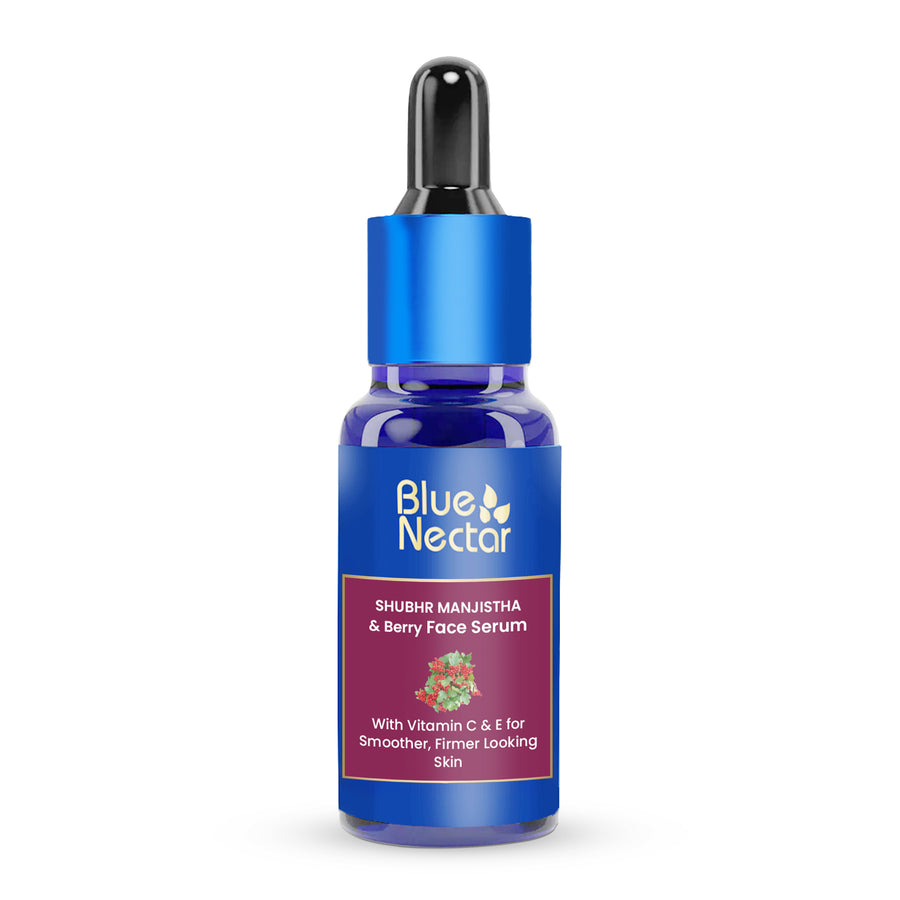
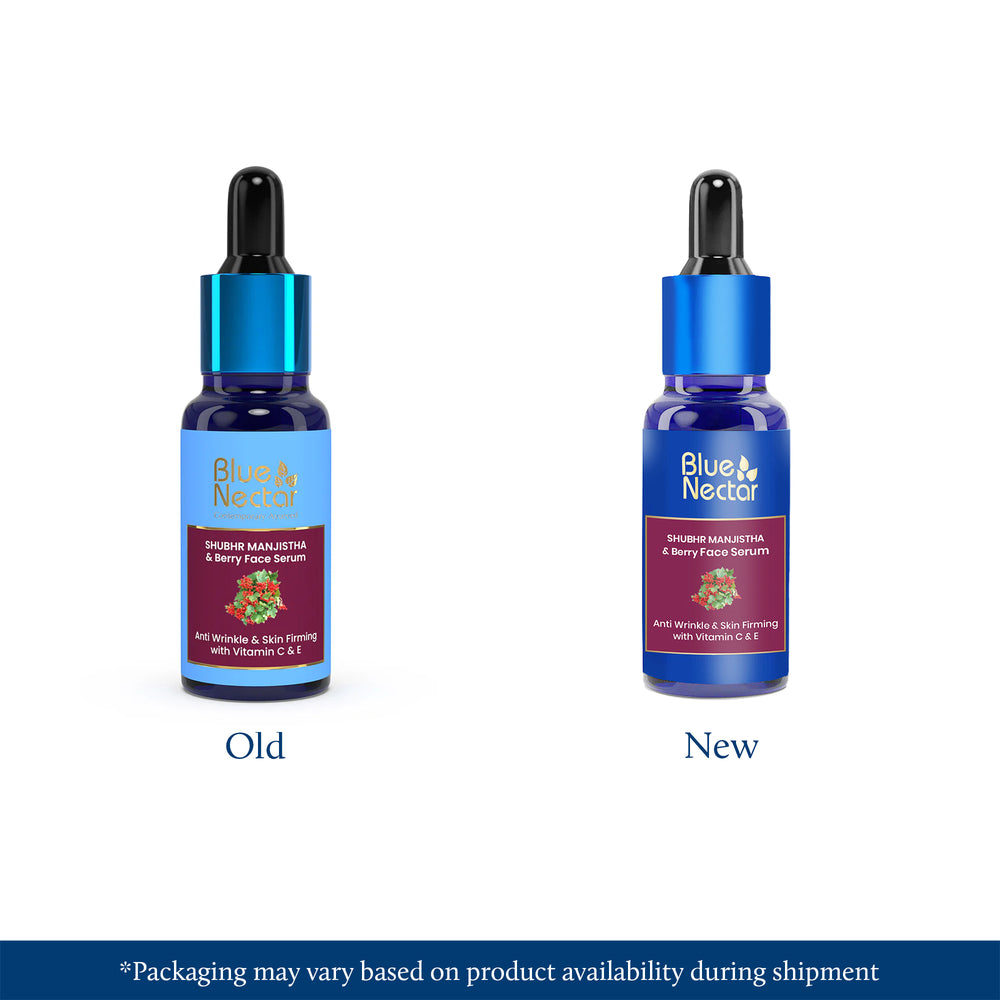
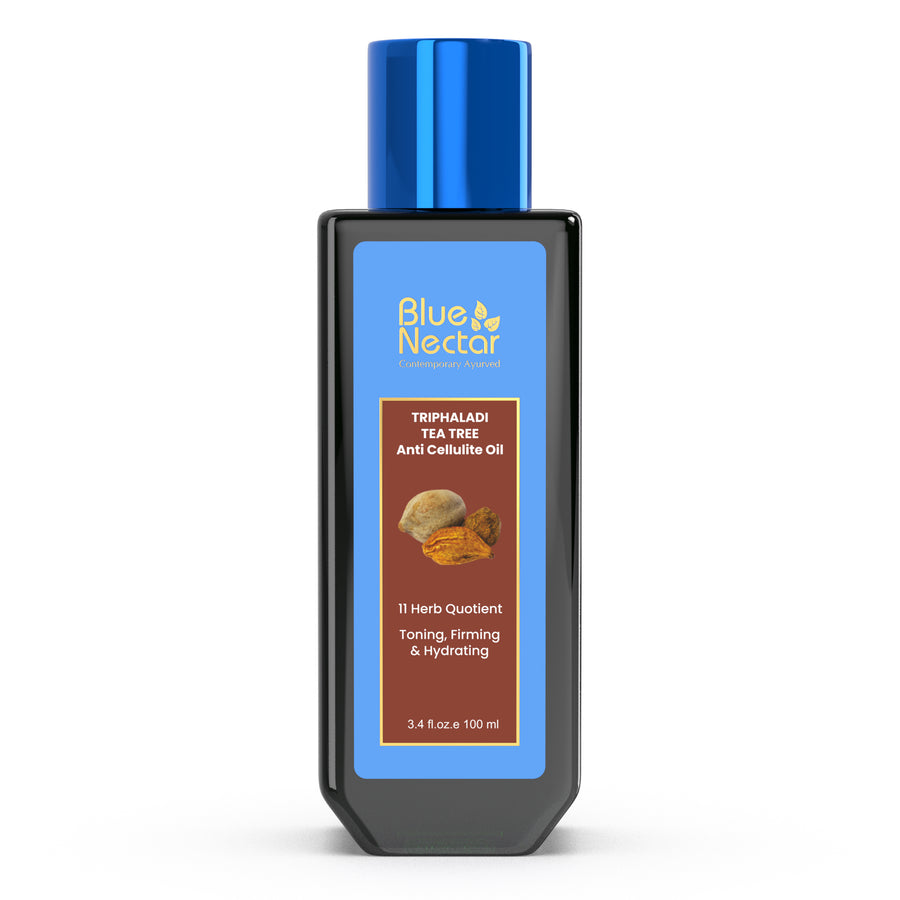
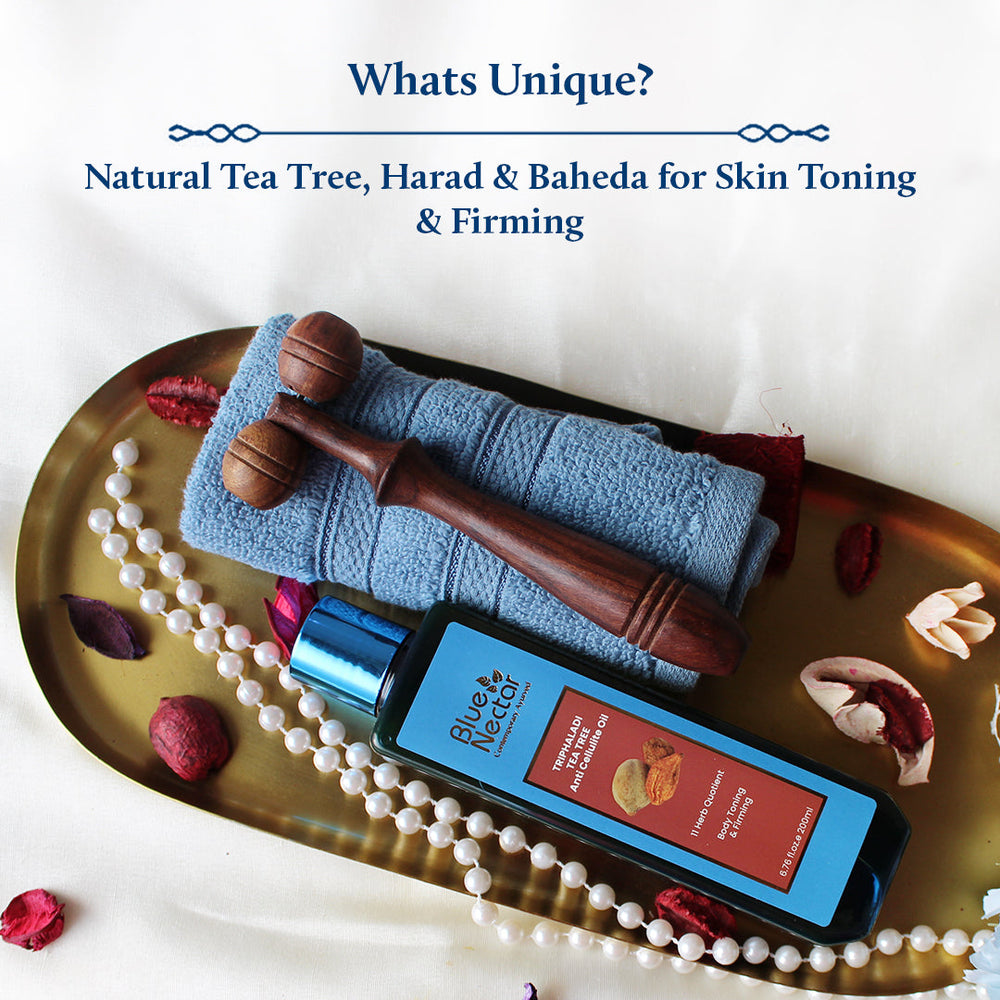


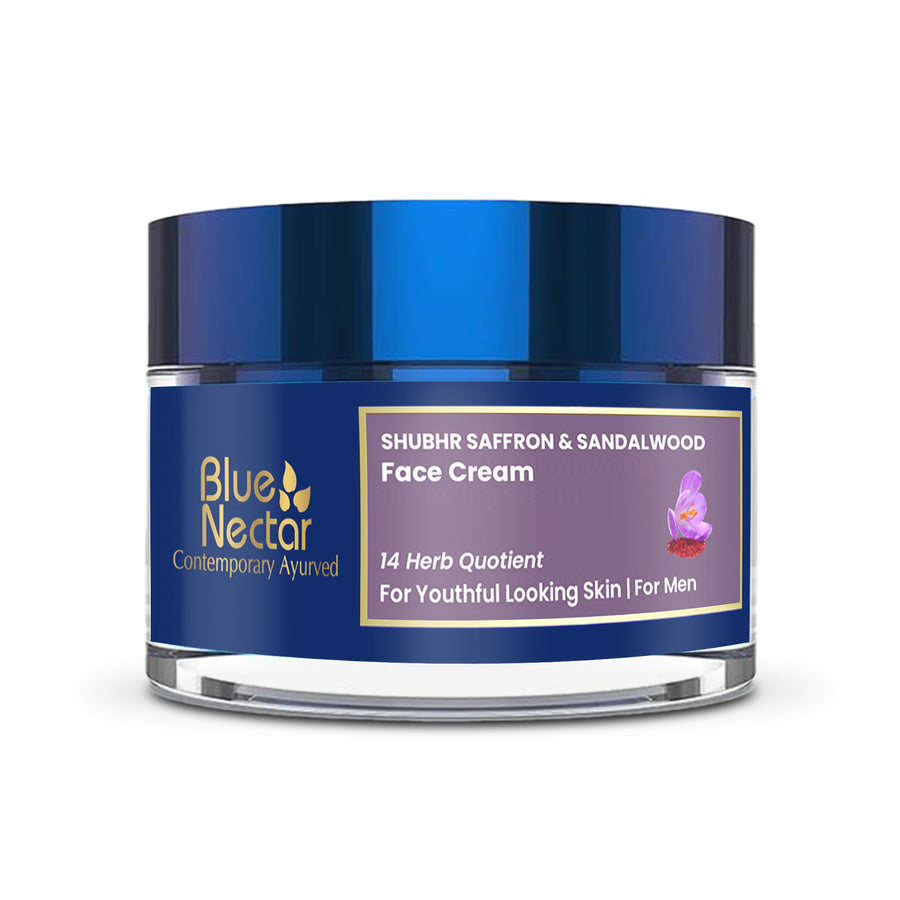
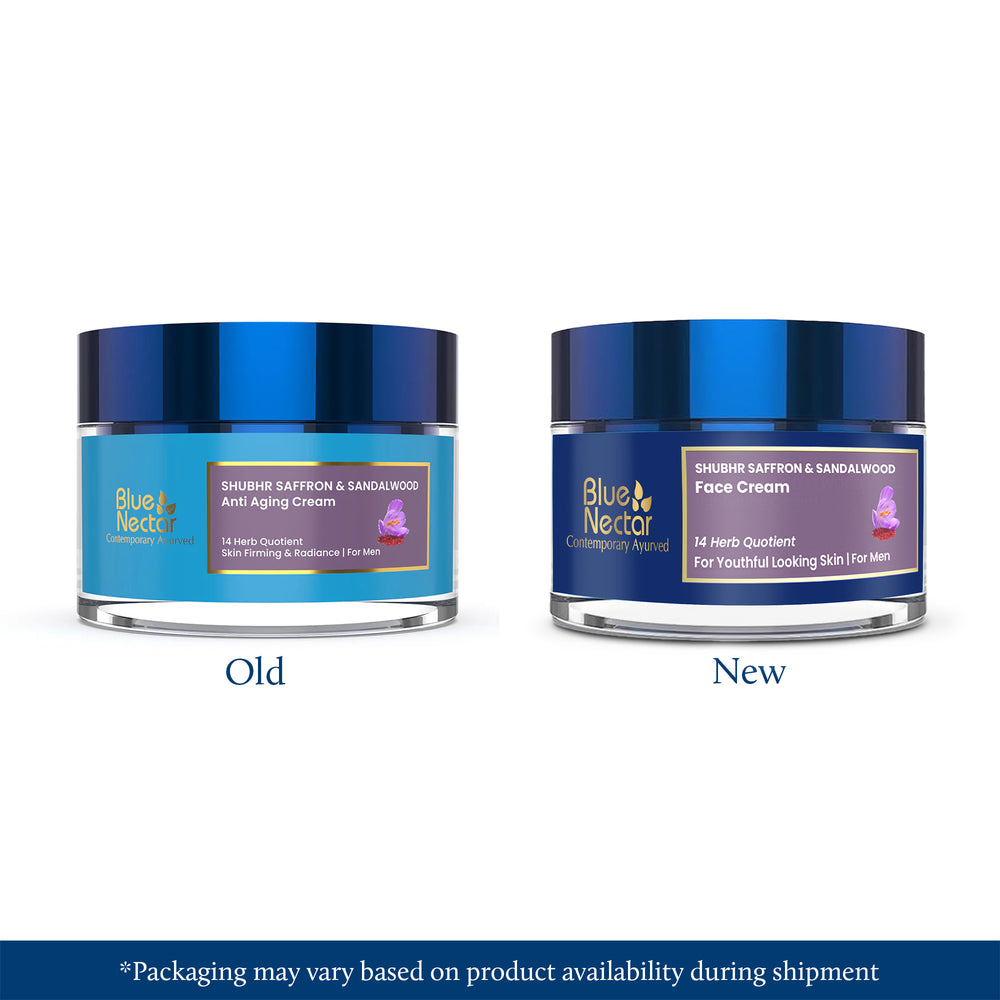
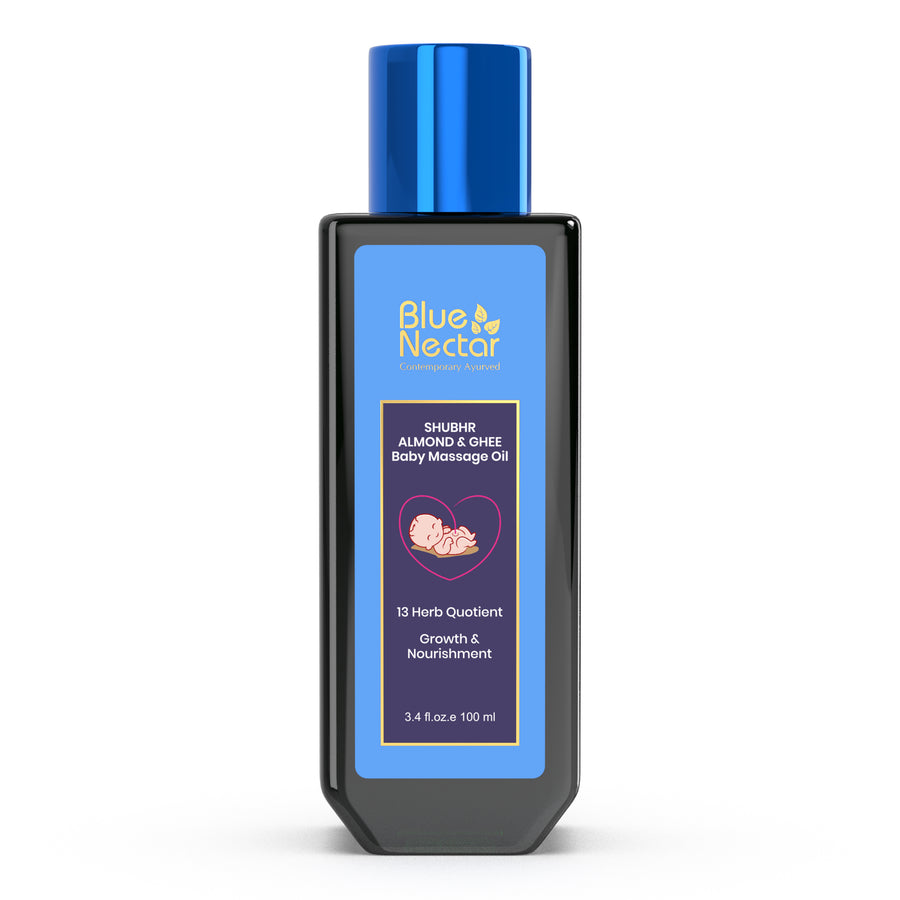
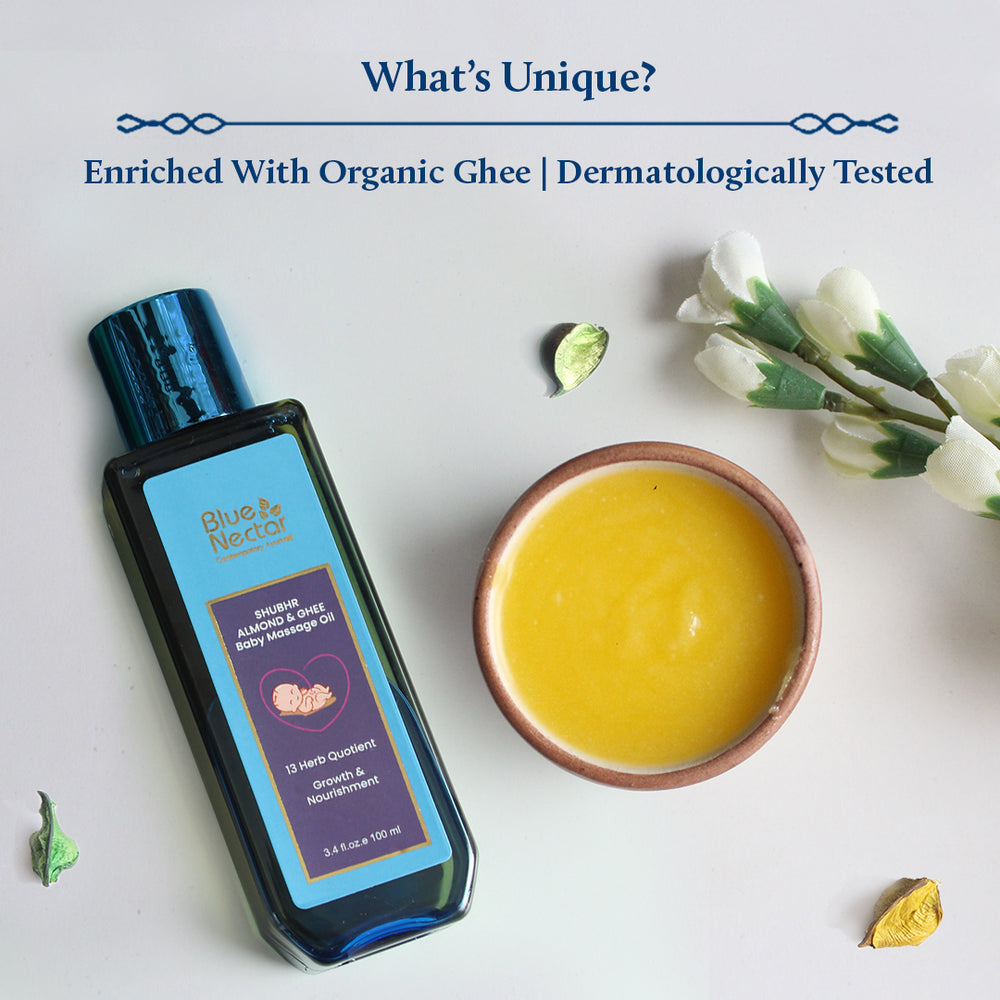
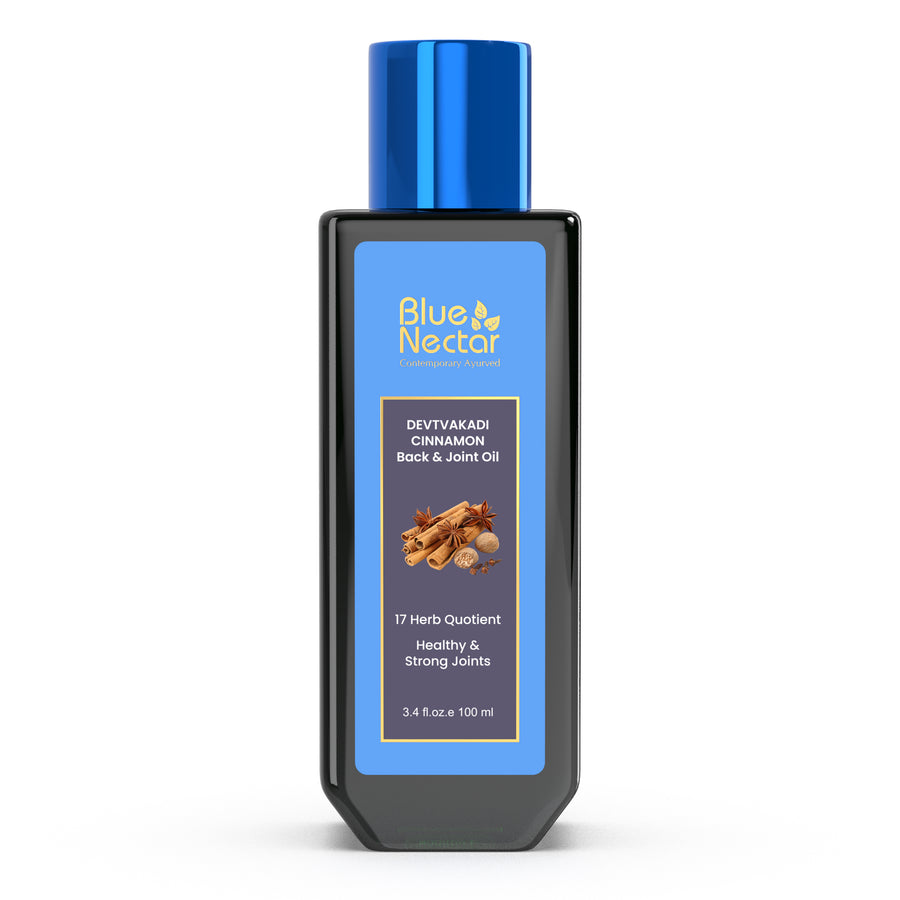
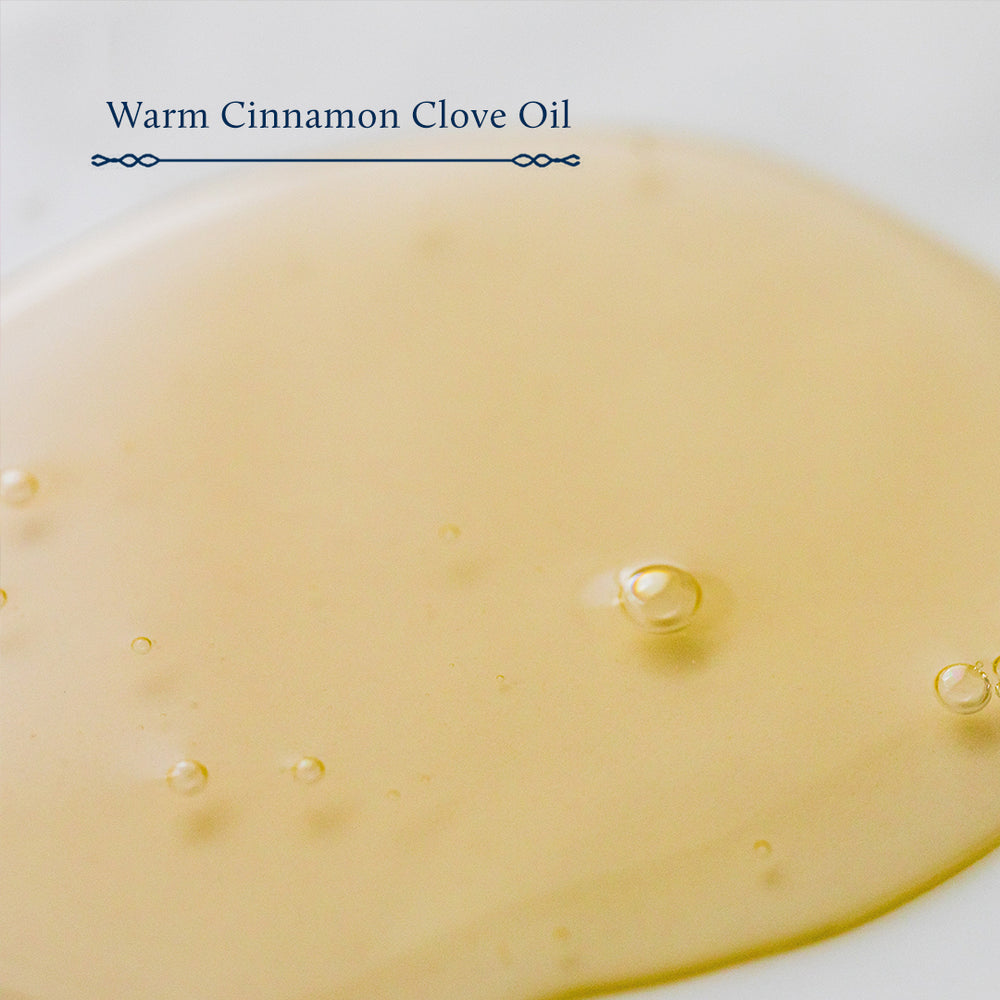



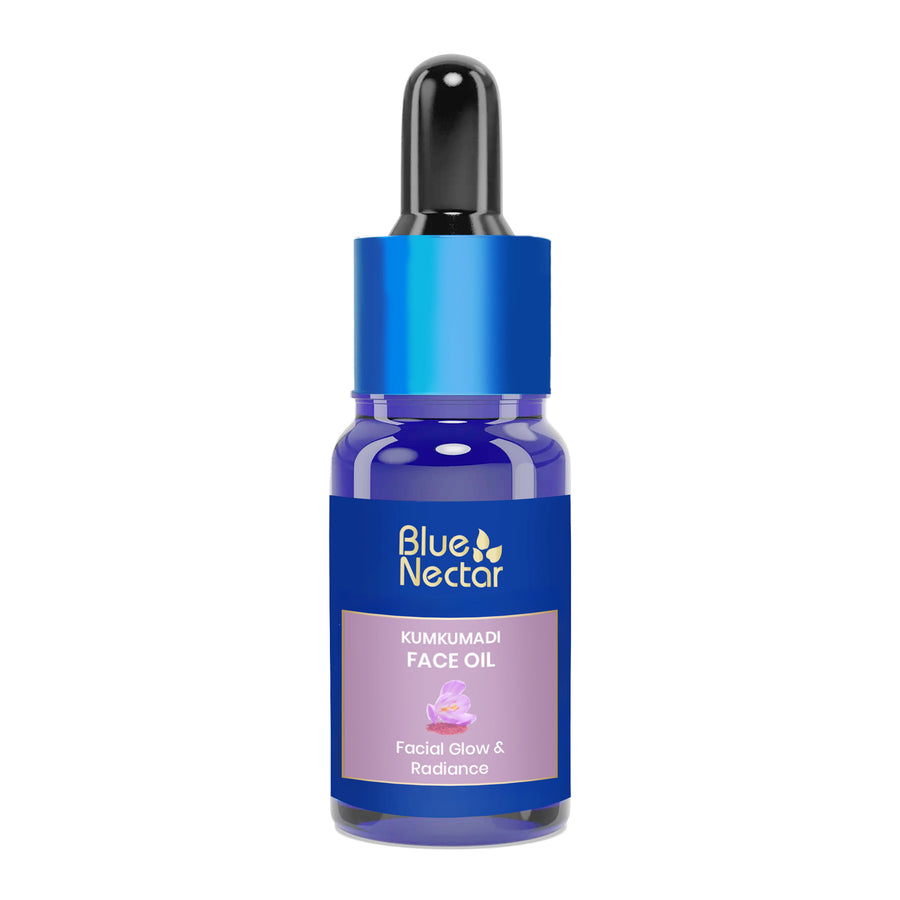
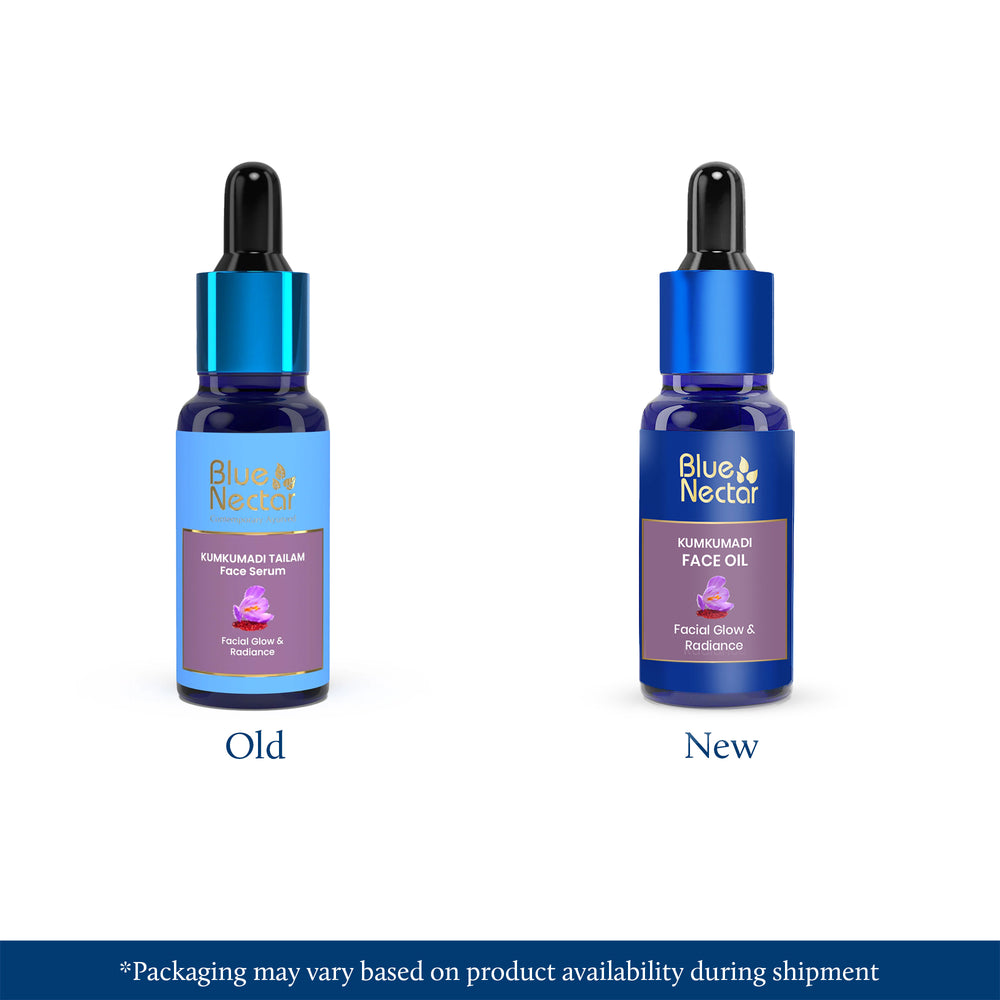
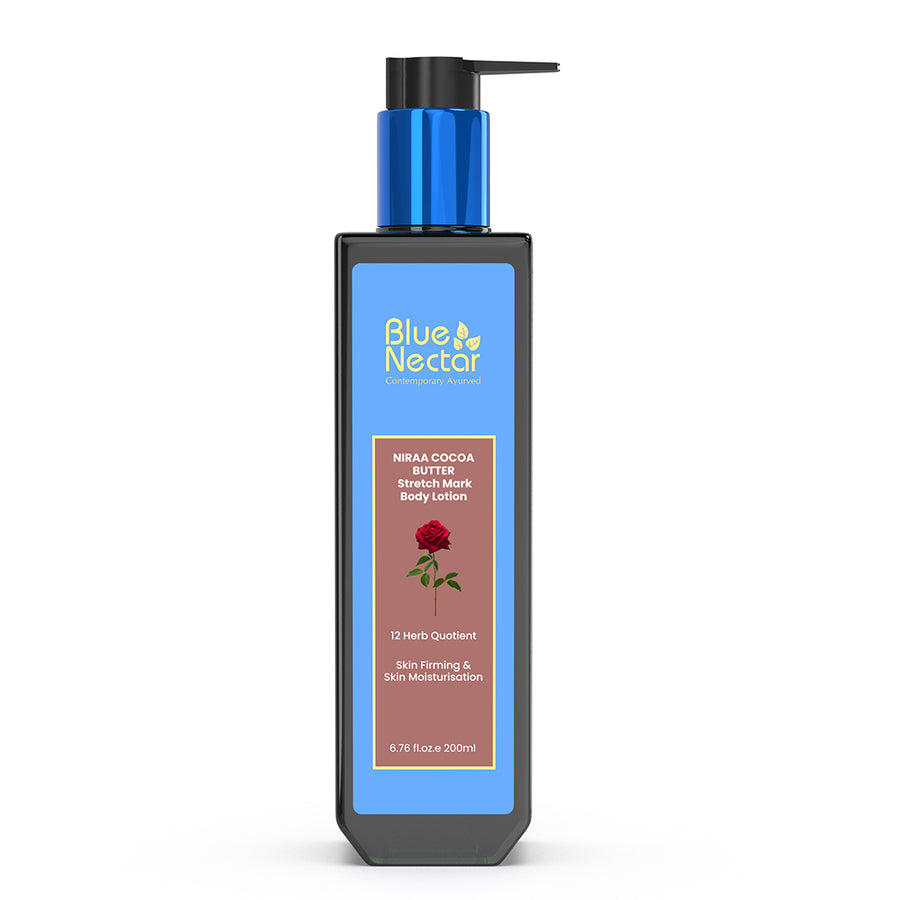
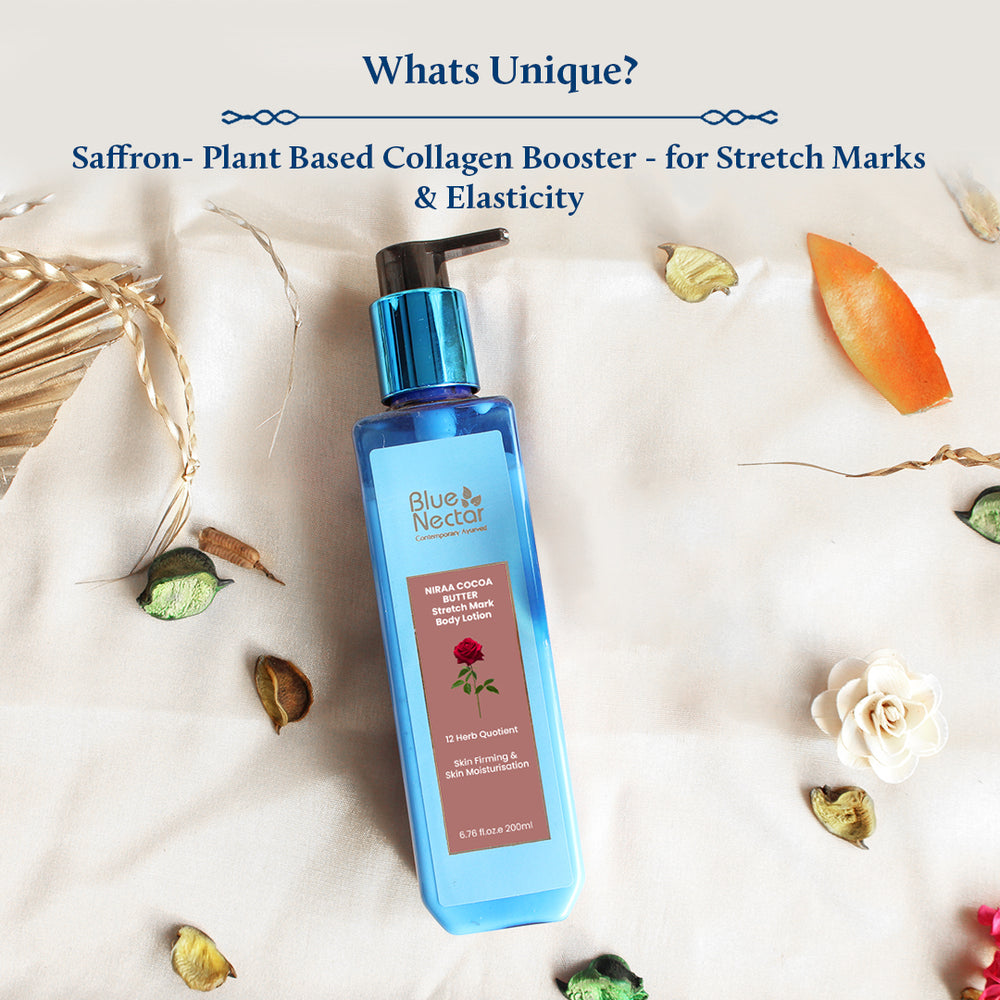
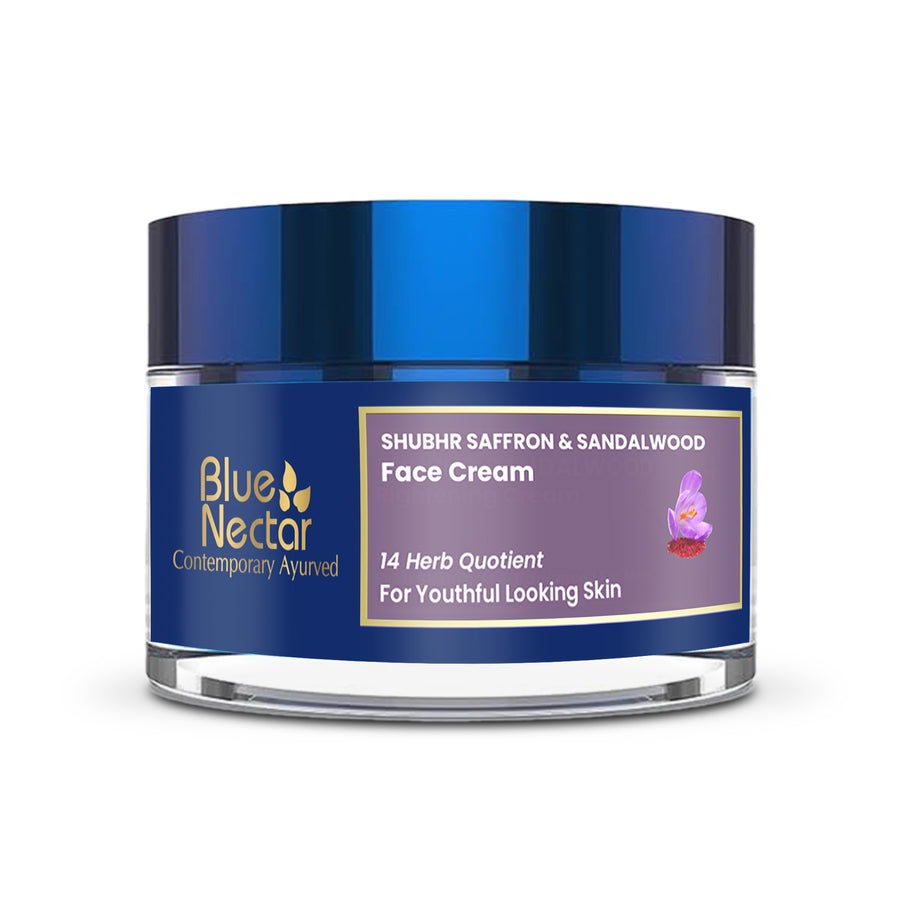
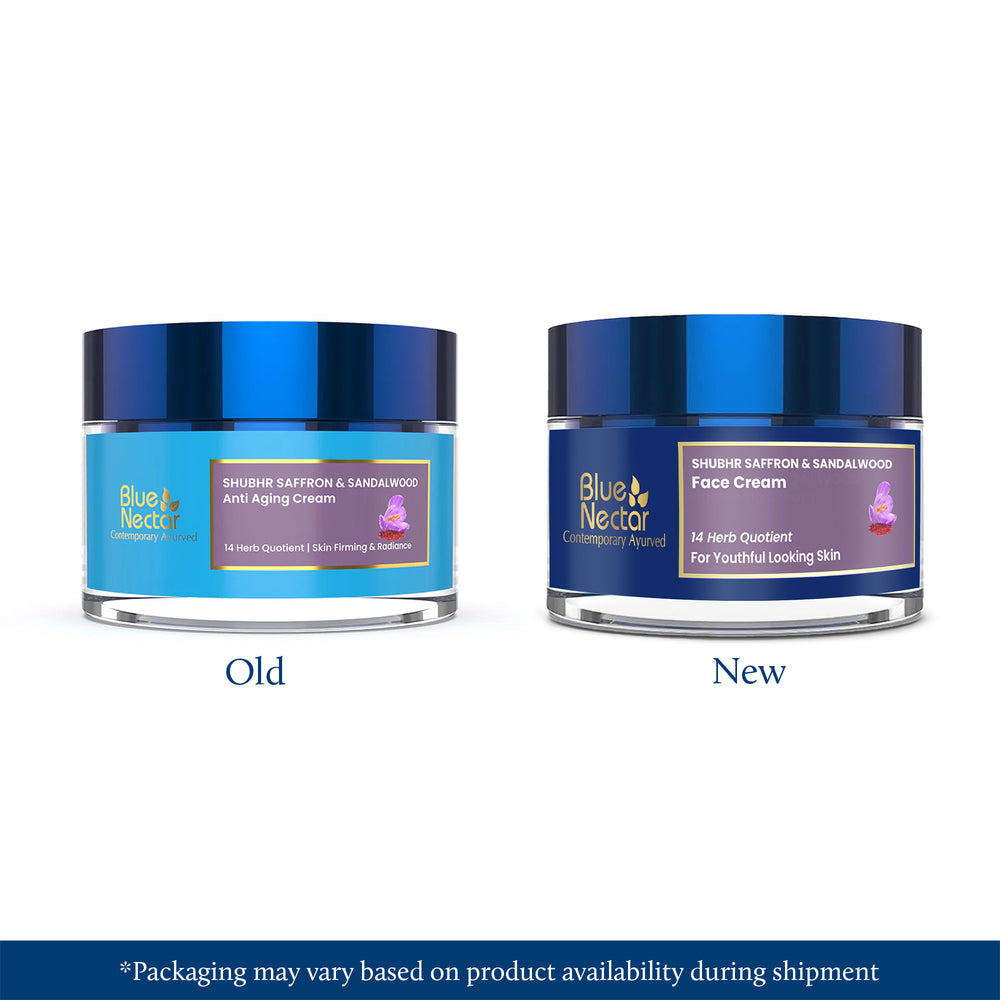
Leave a comment